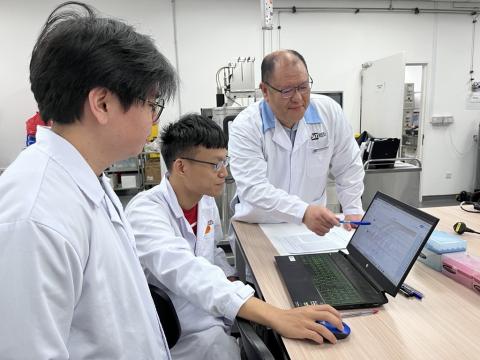Occupational Therapy (OT) may be broad in its scope of practice but must remain purposeful, say the OT practitioners at St. Andrew’s Community Hospital.
The profession of Occupational Therapy suffers from misperception, said Galvin Tan, OT practitioner at St. Andrew’s Community Hospital (SACH). “Some people don’t really know what we OTs do,” he said.
Anna Lee, Manager, Occupational Therapy, Inpatient Therapy Services, SACH added that an Occupational Therapist (OT) is not someone who simply “occupies a patient’s time”. She clarified: “There must be reason and meaning behind each specific activity for patients.”
Holistic care-giving
According to the Ministry of Health Singapore, OT is defined as work carried out by health professionals who “develop and maintain a person’s capacity, throughout life, to perform day-to-day tasks and roles essential to productive living, including self-care, daily living, leisure and work”.
Indeed, OT is quite diverse in its scope of practice, ranging from paediatrics and mental health to rehabilitation and disability and geriatrics. But the key objective of OT lies in improving patients’ overall physical and emotional well-being, explained Tan, who graduated from Trinity College Dublin, with a Bachelor of Science in Occupational Therapy.
He added that a fundamental principle in OT is the need to better understand patients, including those who exhibit “challenging” behaviour. “As an OT, I try to understand their life history, their profession and their significant life events. We share the information with the whole care team as it will help them better manage the patient,” said Tan who works at the dementia ward at SACH.
“They (dementia patients) lose their ability to communicate their needs. When you see them banging the table, you might think that they are being difficult. But they have needs which they want to express but are unable to,” he explained. “It’s really about understanding their needs and behaviour.”
Dr May Lim, Assistant Professor, SIT, concurred, adding that occupational therapists have to understand their patients’ histories before designing a treatment plan for them. She explained: “In understanding a person’s history and role, an OT can design activities which can help occupy and settle a person who might be agitated. So, if a patient has been a housewife all her life, giving simple things for her to do, like folding clothes, is considered something which is a meaningful engagement instead of letting them bang the table.”
Galvin Tan, Occupational Therapist, SACH, engaging a patient in a cognitive stimulating task
In addition, Dr Lim argued that OTs need to adopt a “person-centred approach” when performing their tasks. “Many a time, by taking time to understand a person’s previous roles and interests, one may find the appropriate activity to occupy their time; by tailoring an activity to what the person enjoys doing, instead of just asking them to watch television or colour a book,” she said. “The role of an OT is to help patients maximise their independence and choice-making; for example, feed and dress themselves, maintaining their dignity and self-esteem.”
The work does not end there. From performing simple tasks, the road to recovery would have to revolve around the development of measurable goals between therapist and patient. “You build rapport with patients, develop goals of their personalised rehabilitative programme with them and journey with them to achieve the goals,” Tan explained about the holistic value-add of occupational therapy.
Much-needed Paradigm Shift
While much work can be done to reshape public perception of OT, OT health professionals themselves would also need to relook their own metier, argued Lee.
“OTs should see themselves as someone who can be there for the patients, and not so much as the professional telling patients what they should do,” she said. “Society has changed so much; it’s no longer what I tell you to do. Instead, it should be in a different perspective, a ‘let’s walk together, hand in hand’, an empowering journey with the patient.”
OTs should also develop a keener sense of self-awareness, Lee added. “If a therapist is not aware of himself or herself, including his or her weaknesses and strengths, it’s very hard to help someone else. It is important to be professional with that human touch.”
While the work in OT might be demanding, practitioners can count on a big silver lining, Lee affirmed. “This career provides opportunities to understand life.”















![[FA] SIT One SITizen Alumni Initiative_Web banner_1244px x 688px.jpg](/sites/default/files/2024-12/%5BFA%5D%20%20SIT%20One%20SITizen%20Alumni%20Initiative_Web%20banner_1244px%20x%20688px.jpg)



